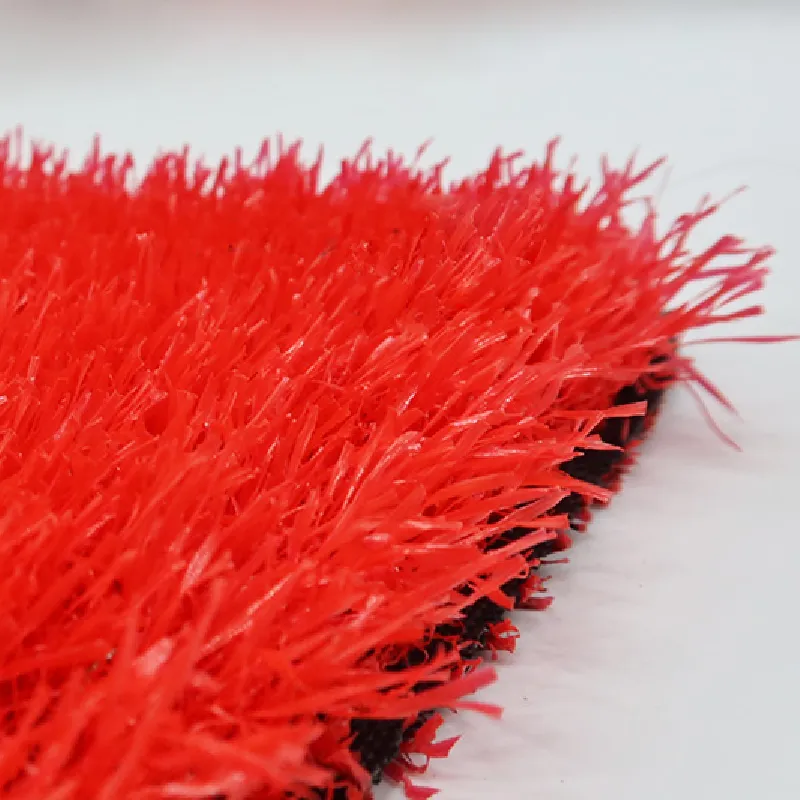
- Afrikaans
- Arabic
- Belarusian
- Bengali
- Czech
- Danish
- Dutch
- English
- Esperanto
- Estonian
- Finnish
- French
- German
- Greek
- Hindi
- Hungarian
- Icelandic
- Indonesian
- irish
- Italian
- Japanese
- kazakh
- Rwandese
- Korean
- Kyrgyz
- Lao
- Latin
- Latvian
- Malay
- Mongolian
- Myanmar
- Norwegian
- Persian
- Polish
- Portuguese
- Romanian
- Russian
- Serbian
- Spanish
- Swedish
- Tagalog
- Tajik
- Thai
- Turkish
- Turkmen
- Ukrainian
- Urdu
- Uighur
- Uzbek
- Vietnamese
Benefits of Synthetic Grass for Soccer Fields and Player Performance
Oct . 20, 2024 23:36 Back to list
The Rise of Synthetic Grass in Soccer A Game-Changer for the Sport
In recent years, synthetic grass has emerged as a transformative force in the world of soccer. Once considered a mere alternative to natural grass, it has gained significant traction among clubs, organizations, and players, proving itself as a viable option for both professional and recreational play. This article explores the benefits, advancements, and implications of synthetic grass in soccer, highlighting why it has become so popular across the globe.
Benefits of Synthetic Grass
One of the most compelling advantages of synthetic grass is its durability. Unlike natural grass, which is heavily affected by weather conditions, synthetic surfaces are designed to withstand the rigors of year-round play. Rain, snow, and extreme heat can wreak havoc on traditional pitches, leading to frequent closures and rescheduled games. Synthetic grass, however, remains playable regardless of the weather, allowing teams to maintain a consistent practice and competition schedule.
Additionally, synthetic grass requires significantly less maintenance compared to natural pitches. The cost of upkeep for natural grass can be exorbitant, including regular mowing, watering, fertilization, and pest control. Synthetic surfaces, on the other hand, need no watering and minimal grooming, translating to lower long-term costs. This is particularly beneficial for lower-league clubs and schools with limited budgets, enabling them to allocate resources to other vital areas.
Enhanced Playing Conditions
Playing on synthetic grass often leads to enhanced playing conditions. The surface is designed to provide better traction and consistent ball roll, which can improve the overall quality of the game. Players have reportedly noted that the predictable nature of the ball's movement on synthetic grass helps in skill development and tactical execution. Moreover, the shock-absorbent properties of modern synthetic grass reduce the risk of injuries caused by hard impacts, making it a safer choice for athletes.
Another notable benefit is the accessibility that synthetic grass provides. Many urban areas struggle with the limited availability of natural playing fields. Synthetic pitches can be installed in various environments, allowing communities to create playing opportunities in places where grassy fields might not be feasible. This accessibility encourages youth involvement in soccer and helps to promote the sport's growth at the grassroots level.
synthetic grass soccer

Technological Advancements
Technological innovations have played a crucial role in the evolution of synthetic grass. Modern surfaces are engineered to mimic the look and feel of natural grass, featuring advanced materials that enhance their realism. For example, the incorporation of various blade heights and colors can create a visually appealing field that attracts players and spectators alike.
Moreover, advancements in infill materials have improved the performance of synthetic surfaces. Traditionally, rubber and sand were the primary infill materials, but newer composites offer better drainage and resilience. These improved infills can lead to a more favorable playing experience, ensuring that athletes can perform at their best without the drawbacks associated with older synthetic fields.
Environmental Considerations
While the environmental impact of synthetic grass has been a point of contention, manufacturers are increasingly focusing on sustainability. Many modern synthetic grass products are made from recycled materials, reducing the carbon footprint associated with their production. Additionally, initiatives are being developed to ensure responsible disposal of old synthetic turf, further minimizing environmental harm.
Conclusion
The rise of synthetic grass in soccer represents a significant advancement for the sport. With its numerous benefits, from durability and low maintenance to enhanced playing conditions and accessibility, it's clear why clubs and organizations are making the switch. As technology continues to improve and sustainability becomes a priority, synthetic grass will likely solidify its place as a critical component in the future of soccer. This evolution not only supports players but also fosters the growth of the sport by providing more opportunities and better playing conditions, ensuring that soccer continues to thrive on fields of all types.
-
The Benefits of Artificial Turf for Indoors
NewsJul.15,2025
-
How Artificial Grass Suppliers Ensure Quality Products
NewsJul.15,2025
-
Artificial Grass and Pets: A Space for Relaxation
NewsJul.08,2025
-
Balcony & Outdoor Decoration with Artificial Grass
NewsJul.08,2025
-
Best Indoor Artificial Grass for Home
NewsJul.07,2025
-
Best Pet Turf for Dogs: Safe & Durable Artificial Grass Options
NewsJul.07,2025
Products categories









